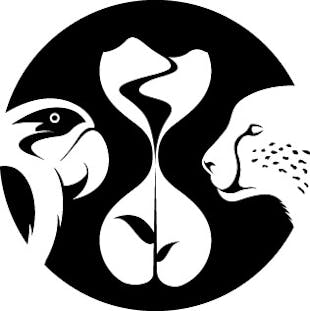Biological corridors are essential for the protection and/or restoration of natural habitats. In line with this and to minimize the increasing threat by means of human activities such as logging and urbanization, Costa Rica has defined ambitious goals related to the Biodiversity-Convention AICHI 2020 and defined milestones in their “National Biodiversity Strategy”. Tropica Verde projects accompany these efforts by working closely together with the Centro Cientifico Tropical (CCT), a Costa Rican NGO with roots in the US, which is in charge of the execution of the National Biodiversity Strategy. Tropica Verde’s Reserva Kinkajou project has been established with the support of the Quick Response Fund for Nature (QRFN) in 2019 and today constitutes an important part of a bio corridor in the North of Costa Rica. Major parts of the Reserva Kinkajou area could be renatured and umbrella species such as the Great Green Macaw are increasingly observed again in this region, using the area as crossing point on their way from or to the North. The next steps are a) to extend the protected area around Kinkajou and b) to develop the Reserva Kinkajou with a visitor centre and nature trails for scientists and ecotourism as an internationally recognized example for bio corridors in tropical regions worldwide.
The Biodiversity goals of Costa Rica
Costa Rica’s Ministerio de Ambiente y Energía (MINAE) in cooperation with the Centro Cientifico Tropical (CCT) aims to reach the goals defined by the Biodiversity-Convention AICHI 2020 as one of the first countries worldwide. Since 2015 there is a “National Biodiversity Strategy”, comprising the national bio corridor program (PNCB) and since 2017, an action plan for the adaptation of biodiversity to climate change.
The role of Tropica Verde in Bio Corridor restoration in Costa Rica
Tropica Verde´s ecological activities in Costa Rica started in 1989 and look back to now more than 30 years of successful project work comprising land purchase and protection of primary forest and species, reforestation, educational programs for local students etc. Tropica Verde closely cooperates with the Costa Rican NGO CCT (as mentioned above) in projects supporting the National Bio Corridor Program (PNCB).
In 2017, Tropica Verde became aware of deforestation activities in a primary forest near the village Horquetas, north of San José, at the edge of the Braulio Carrillo National Park. Unfortunately, deforestation could not be stopped. In 2018 and 2019, the acquisition of this important buffer zone with almost 40 ha of partially deforested land on the border of the Braulio Carrillo National Park was achieved in two stages with support of the Quick Response Fund for Nature and a private family from Switzerland. Located directly on the edge of the national park, the protected area represents an important piece of a larger biological corridor with its unique habitat and biodiversity. Today, in 2022, large parts of the deforested Reserva Kinkajou have been successfully reforested by Tropica Verde.
In 2021, the workers in our tree nursery on Reserva Kinkajou achieved to fill about 600 planting bags with seeds. Most of the seeds were collected by hand in the nearby primary forest and were then placed in the germination bank. The seedlings are then transferred to the planting bags where they can grow larger in the protected area of the nursery. We have in our nursery the Aceitunos, whose fruit is gladly eaten by howler monkeys and the forest almond trees "Almendros", important food source for the Great Green Macaw. There is also the Balsa tree, whose fruit is especially liked by the Kinkajou, after which our Reserva is named. The goal is to create a habitat from the small trees on the Reserva Kinkajou, from which a healthy secondary forest can then develop, where the animals can continue to live and reproduce well.
March 2022: The 50 new jabillo trees (sand bush tree for macaws) planted in mid-November with a travel group have grown well. Overall, the reforestation appeared more vigorous and robust compared to November 2021. Probably the current survival rate is 80 %. This was the proof of concept for active and successful reforestation by tourists within the Reserva Kinkajou.
Animals such as the endangered Great Green Macaw can be observed again with increasing frequency. The Reserva Kinkajou has for long served as a habitat for the Great Green Macaws on their seasonal migrations from north to south. The reason for this is the presence of important forage trees such as the rare monkey pot tree. Tropica Verde has placed these forage trees under protection and is planting other important local rainforest trees such as Almendro, Titor, Ceiba, Jabillo and Gavilan on logged areas. This not only protects the habitat of the macaws but also many other endangered species. In May 2020, Tropica Verde was able to see how important the reserve is for the Great Green Macaws: up to 7 breeding pairs moved daily from tree to tree in the reserve. An important observation with regard to the decreasing macaw population numbers in Costa Rica.
Examples for the most prominently endangered species recently observed (e.g. night active animals by camera traps) in the Reserva Kinkajou are: Baird’s Tapir (Tapirus bairdii), ICUL Endangered; Great Green Macaw (Ara ambiguus), IUCN Critically endangered; Geoffroy’s spider monkey (Adeles geoffroyi), IUCN Endangered; Spiny headed tree frog (Triprion spinosus) IUCN Near Threatened.
Tropica Verde thanks QRFN for their funding which enabled us to fulfil this important bio corridor project in Costa Rica!
Authored by Tropica Verde



